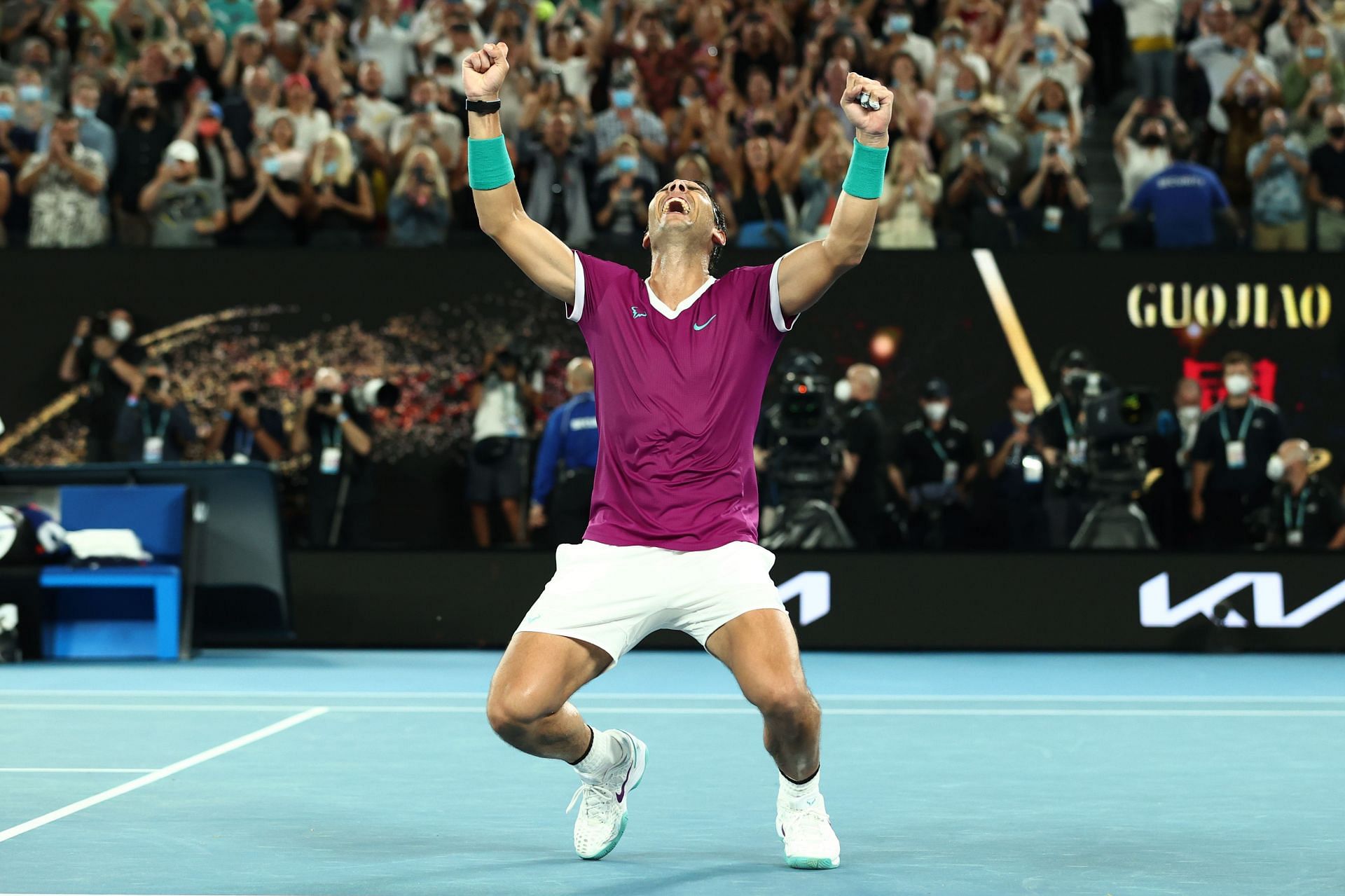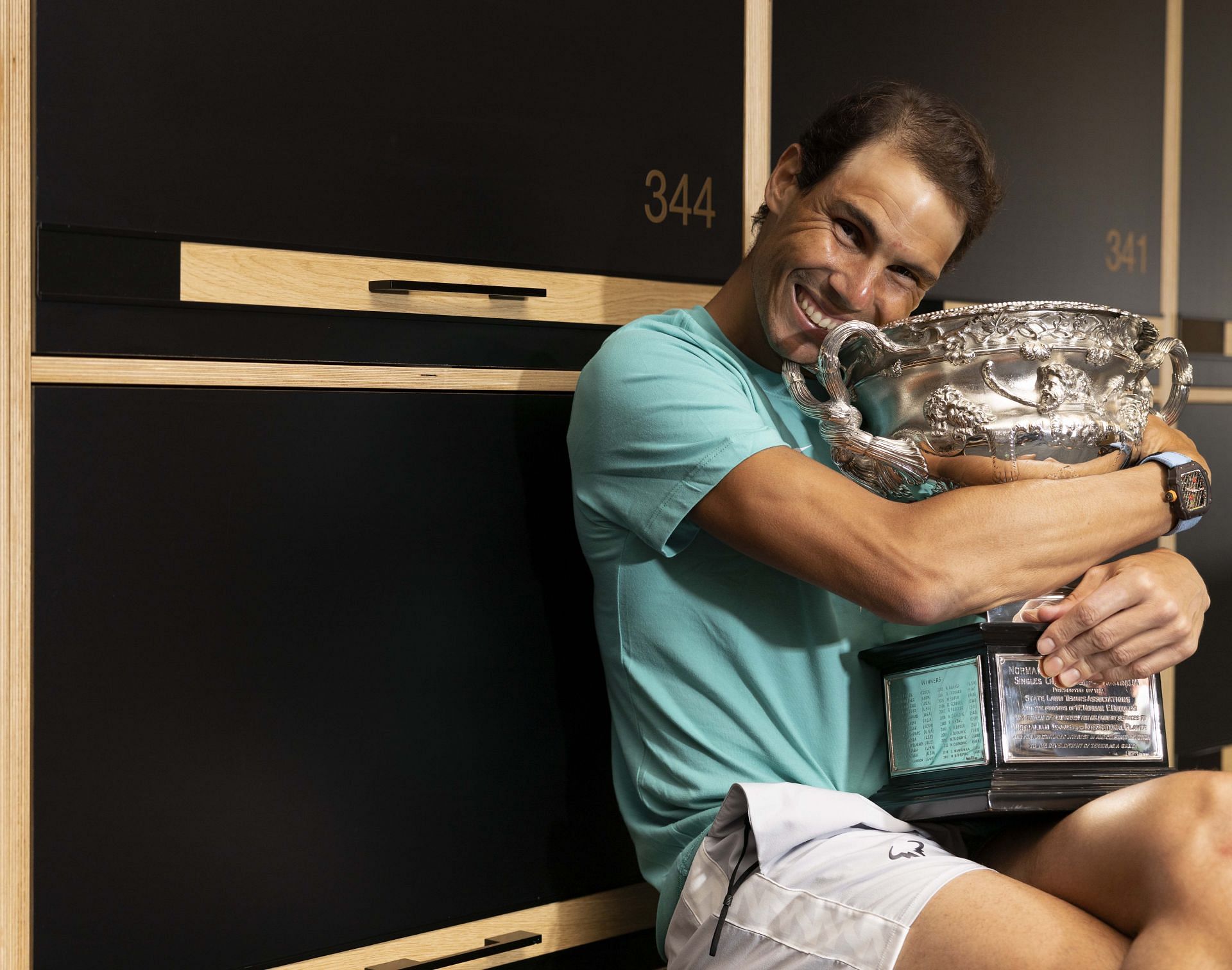
The Rafael Nadal phenomenon is beyond our understanding, so why do we even try?

A couple of years ago, Nike released an ad that showed exactly what makes Rafael Nadal the player that he is. Charting Nadal's progress from his tour debut at 16 all the way up to his 19th Slam title, the video had a voiceover - by none other than John McEnroe - asking the question that has haunted the Spaniard's opponents for 20 years now:
"Is he going to play every point like that?"
As far as 1-minute videos go, you'd be hard-pressed to find a more heart-tugging one than that. Every time I watch the montage, I get goosebumps. Being shown - and that too in such artistic fashion - how Nadal has been fighting like a madman for decades can stir the emotions in even the most cold-hearted person on earth.
But on Sunday, we were reminded that real life can outdo any piece of art when it comes to tapping into our rawest nerves. When Rafael Nadal started sending bolts of electricity through Melbourne Park midway through the Australian Open final against Daniil Medvedev, it seemed like he had the emotions of everyone around him on a string.
Nadal wasn't just staring defeat in the face at the start of the third set. He was staring at crushing disaster, at the knowledge that yet another opportunity to win a second Australian Open title was about to be cruelly snatched from him. As he stepped up to serve down two sets to love and facing three consecutive break points against a rampaging Medvedev, Nadal cut a truly sorry figure.
"Is he going to play every point like that?"
We asked ourselves the question again at that moment, and we got our answer immediately. Nadal didn't do anything spectacular on those three break points; he knew that it wasn't the time to go for flash and pomp. Instead, he did what he always does: put his head down, run like his life depended on it, and try not to miss.
We didn't realize it at the time, but Nadal would use that all-important service hold as the springboard to bring the world to its feet. Having got out of jail by the skin of his teeth, the 35-year-old raised his level and soon started doing just enough to plant a seed of doubt in Medvedev's mind.
"Sport is unpredictable, no? If you fight till the end, normal thing is lose the match in straight sets after that situation," Nadal said in his post-match presser while talking about the three break points he saved at the start of the third set. "I don't know. I was repeating to myself during the whole match, I lost a lot of times here having chances, sometimes I was a little bit unlucky. I just wanted to keep believing till the end, no? I just wanted to give me a chance."
By "just giving himself a chance", Nadal managed to turn near-certain defeat into the greatest comeback win of his career. Medvedev never played poorly; he kept trying to execute his plans even after failing to close the match out. But such was the intensity of Nadal's tennis in the second half of the match that the half-foot height difference between the two players seemed to shrink to nothingness before our very eyes.
Just like the rest of his GOAT career, Rafael Nadal's comeback against Daniil Medvedev can't be explained in words

We can talk all day about how Rafael Nadal neutralized Daniil Medvedev's serve advantage by blocking back dozens of missiles into awkward positions. Or how he exposed the Russian's inability to put away mid-court forehands by scrambling from one corner to the next and getting one more ball over the net. Or how, even at 35, he looked like the stronger and fresher player as the match wore on.
But the truth is that nothing can fully explain how Nadal managed to come back from the dead in a match where he was the clear underdog, and where he never really played his best tennis. And did I mention it's been just six months since he was on crutches because of a chronic foot injury?
There is no way to truly decode the phenomenon that is Rafael Nadal. There is no explaining him. He just is, all muscles and fire and power and guts, and that's enough to script a tale that nobody would ever forget.
"Love for the game, passion, positive attitude, and working spirit," Nadal replied when asked how he overcomes obstacles. "That's all, no? And the right people next to me helping every single day. I think that's all."
How do we use that as an instruction manual for aspiring tennis players around the world? How do we tell them that if they just love the game and have a positive attitude, they can become the greatest player of all time? How do we teach them the ability to hit that line-licking forehand winner at break point in the fifth set, a shot so incredible it made us rub our eyes in disbelief?
Nobody can teach what Nadal does, not even the man himself, because it is unteachable.
This is not to say the Spaniard never suffers lapses in concentration or execution. Nadal could have evened the match in the second set if he had held serve at 5-4. Then in the fifth set, he could have finished the contest about 15 minutes earlier than it did if he hadn't got broken from 5-4, 30-0.
He had been there before too. In both the 2012 and 2017 Australian Open finals, Nadal was a break up in the decider before his opponent came charging back to steal the title from under his nose.
That brings us back to the unanswerable question: how did he do it? How did he exorcise his long-standing ghosts and fight past the very calamity he had experienced before? How did he break back at 5-5 to ensure that 2022 didn't join the list of 'cursed' Australian Opens?
"I don't know," Nadal said when asked to explain his comeback. "Tonight was for me 2012, 2017, 2014 with the injury, too, I have been in that position couple of times in my career here in Australia. Tonight have been unforgettable. I feel very lucky. At the same time I think I fighted a lot and I worked a lot to try to come back to the tour and to give myself a chance to keep playing tennis."
Maybe it was luck, as the man modestly suggested. Maybe it was the raucous support of the crowd, who clearly didn't want Medvedev to win. Or maybe, it was just Rafael Nadal.
Tonight was truly "unforgettable" - not just for Nadal, but for the whole world, because it reminded us just how high he can soar when he sinks his teeth into a battle. It was five hours and 24 minutes of unbridled war and emotion, and it may well have topped anything the Spaniard has done in his legendary career.
20 years after he first burst on to the scene as a scrawny kid trying to outmuscle and outlast his bigger opponents, Rafael Nadal is still charting new waters with his fight. He is still putting everything on the line just for the sake of being on court a few minutes longer, and he is still making us question everything we know about human limitations.
Is he going to play every point like that? You bet your ass he is, until the end of time.